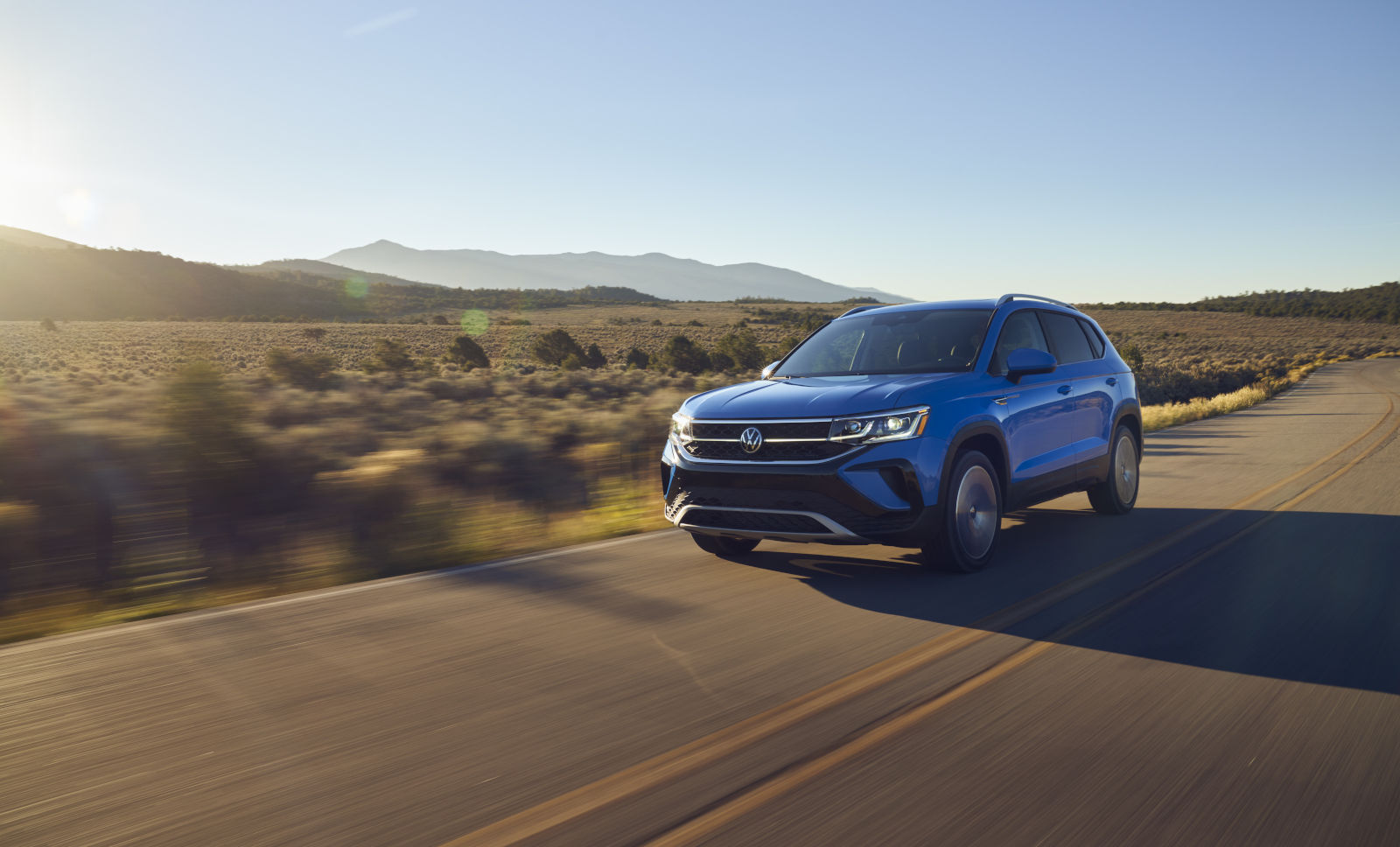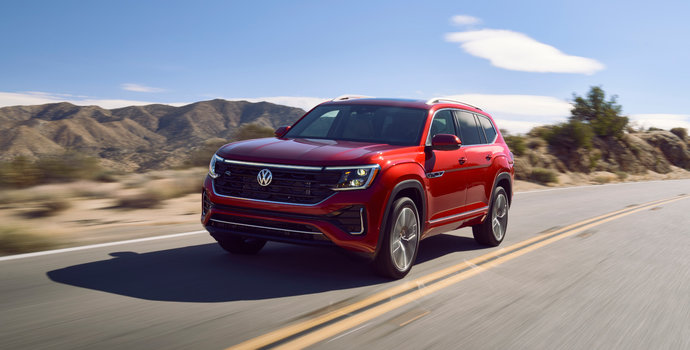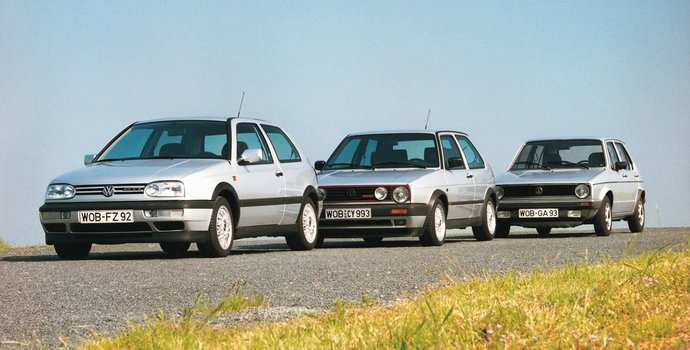When it comes to choosing between the 2024 Volkswagen Taos and the 2024 Volkswagen Tiguan, potential buyers in Toronto are presented with a compelling set of options. Both vehicles offer Volkswagen's renowned blend of performance, comfort, and technology, but there are key differences to consider. This detailed comparison aims to explore not only the price and features of these two models, but also the nuances that could sway your decision from one to the other based on your needs.
Price differences between the 2024 Volkswagen Taos and the 2024 Volkswagen Tiguan
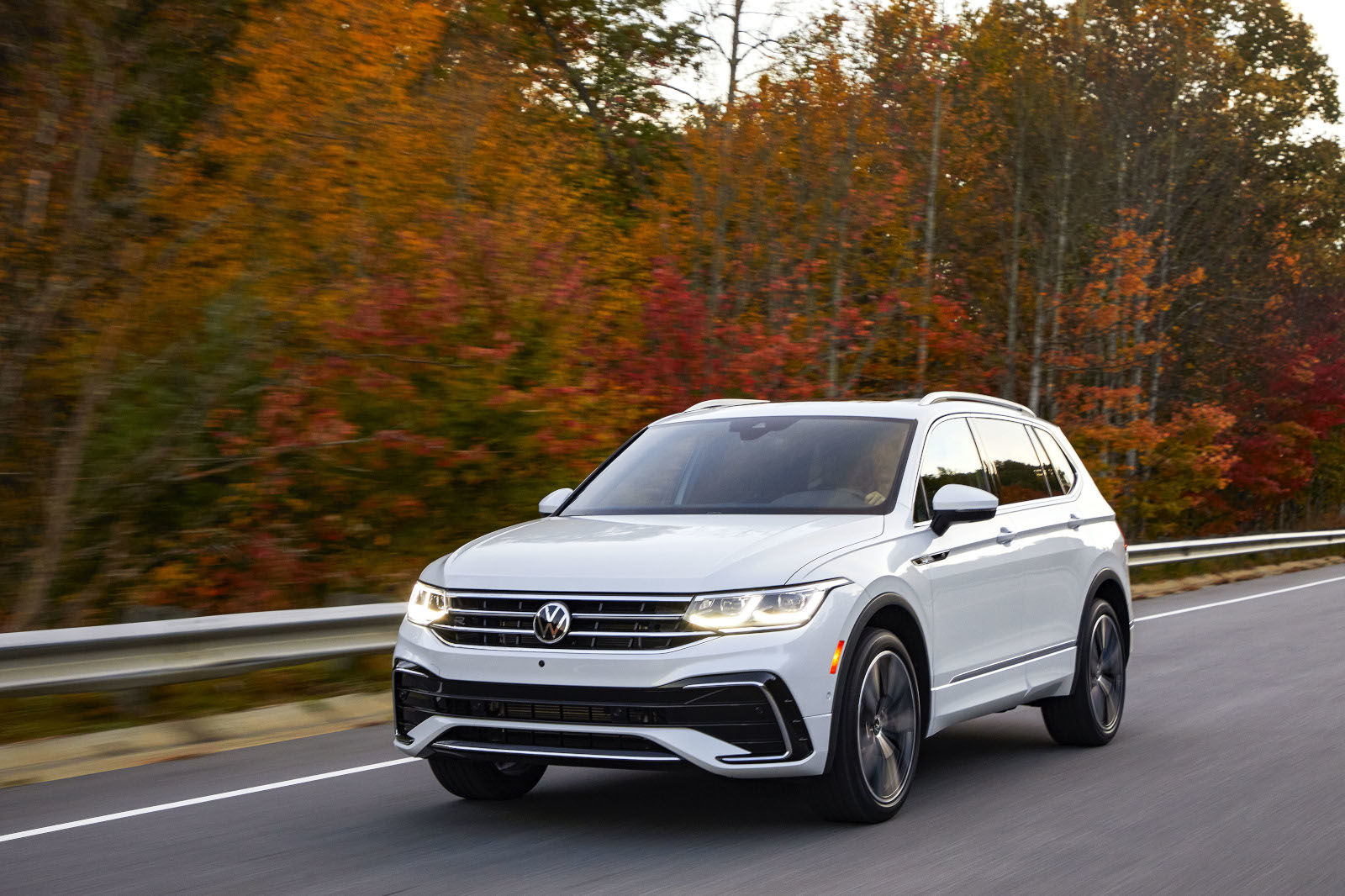
First, let's look at the financial aspects, seeing how starting prices, destination charges and prices for comparable configurations compare between the Taos and Tiguan, across different trim levels and configurations.
Comparison of starting prices
The Volkswagen Taos and Tiguan cater to different segments within the SUV market, reflected in their pricing structures and standard offerings. The Taos, positioned as a more compact and affordable option, initially presents itself with a lower entry price compared to the Tiguan. This difference is partly because the base model of the Taos comes equipped with front-wheel drive, aiming at buyers looking for a more economical option without the need for all-wheel drive. In contrast, the Tiguan starts with a higher base price, offering 4Motion all-wheel drive as a standard feature, targeting those who require or prefer the added traction and stability offered by the VW all-wheel drive system.
When comparing models equipped with all-wheel drive, the Taos and Tiguan continue to showcase their respective positions in Volkswagen's lineup. Opting for an all-wheel drive in the Taos narrows the initial price gap between it and the Tiguan, though the Tiguan remains the pricier option, justified by its larger size, additional standard features, and a more powerful engine. The divergence in pricing becomes even more pronounced when examining the top-of-the-range trims for both models. The premium commanded by the highest trim of the Tiguan over the Taos's equivalent underscores the Tiguan's positioning as a more upscale, spacious, and better-equipped offering, designed to appeal to those who prioritize luxury and performance in their SUV choice.
Standard and optional equipment on the Taos and Tiguan
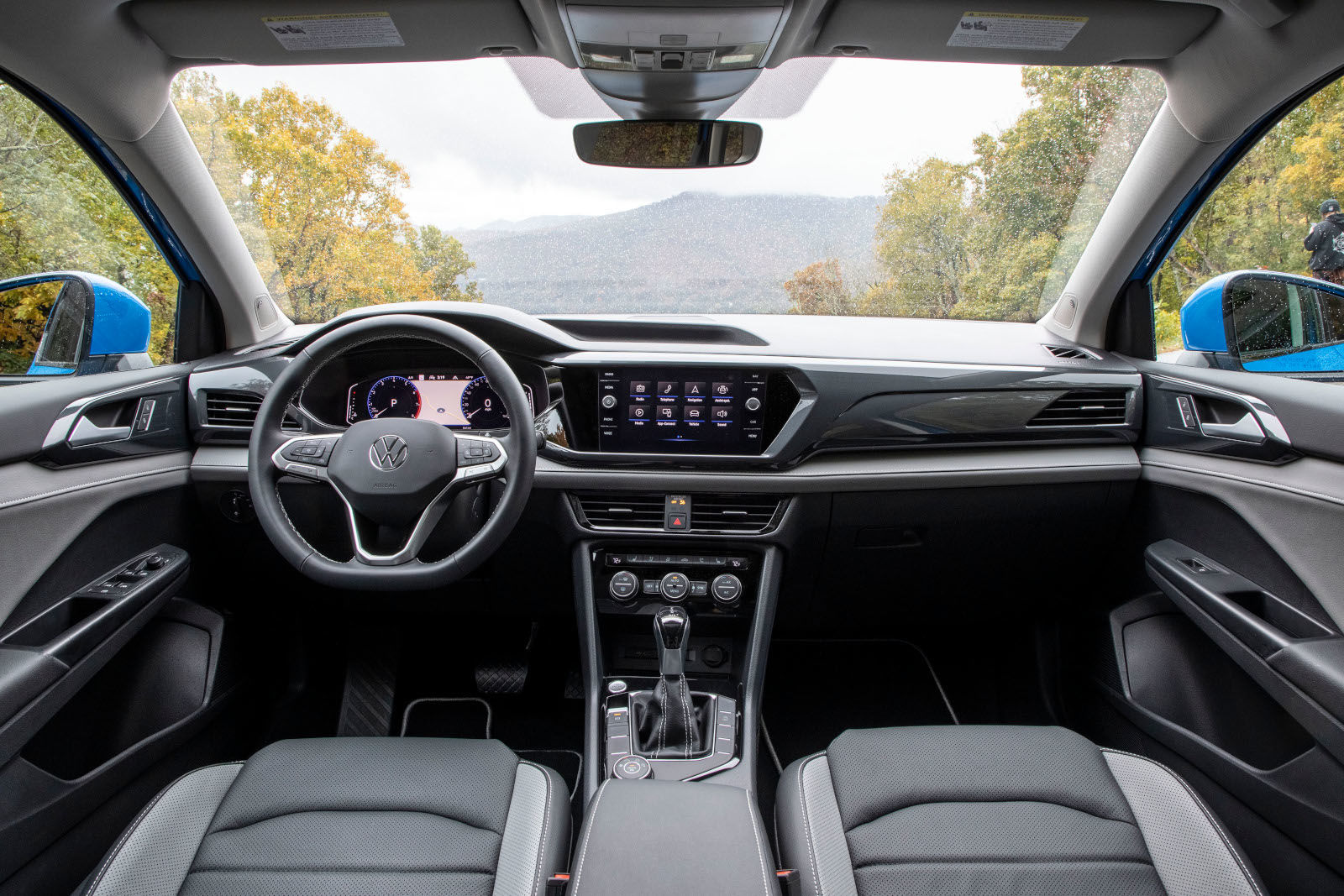
Price is one thing, of course, but you also have to look at the differences in equipment. In terms of standard equipment, both models offer a similar package:
- Heated front seats: Both models offer heated seats for driver and passenger.
- Heated steering wheel: A standard luxury in both vehicles, improving comfort in cold weather.
- Steering wheel-mounted audio controls: Allow easy audio adjustments without taking your hands off the wheel.
- AM/FM stereo: Standard entertainment function.
- LCD screen size (inches): A 6.5-inch screen is standard, offering clear visibility for infotainment functions.
- Smart device integration: Both vehicles feature App-Connect with Android Auto and Apple CarPlay for seamless smartphone integration.
- Headlamps: LED headlamps offer improved visibility and modern styling for both models.
However, the Tiguan stands out with additional features not found in the Taos across the range:
Exclusive features in the Tiguan
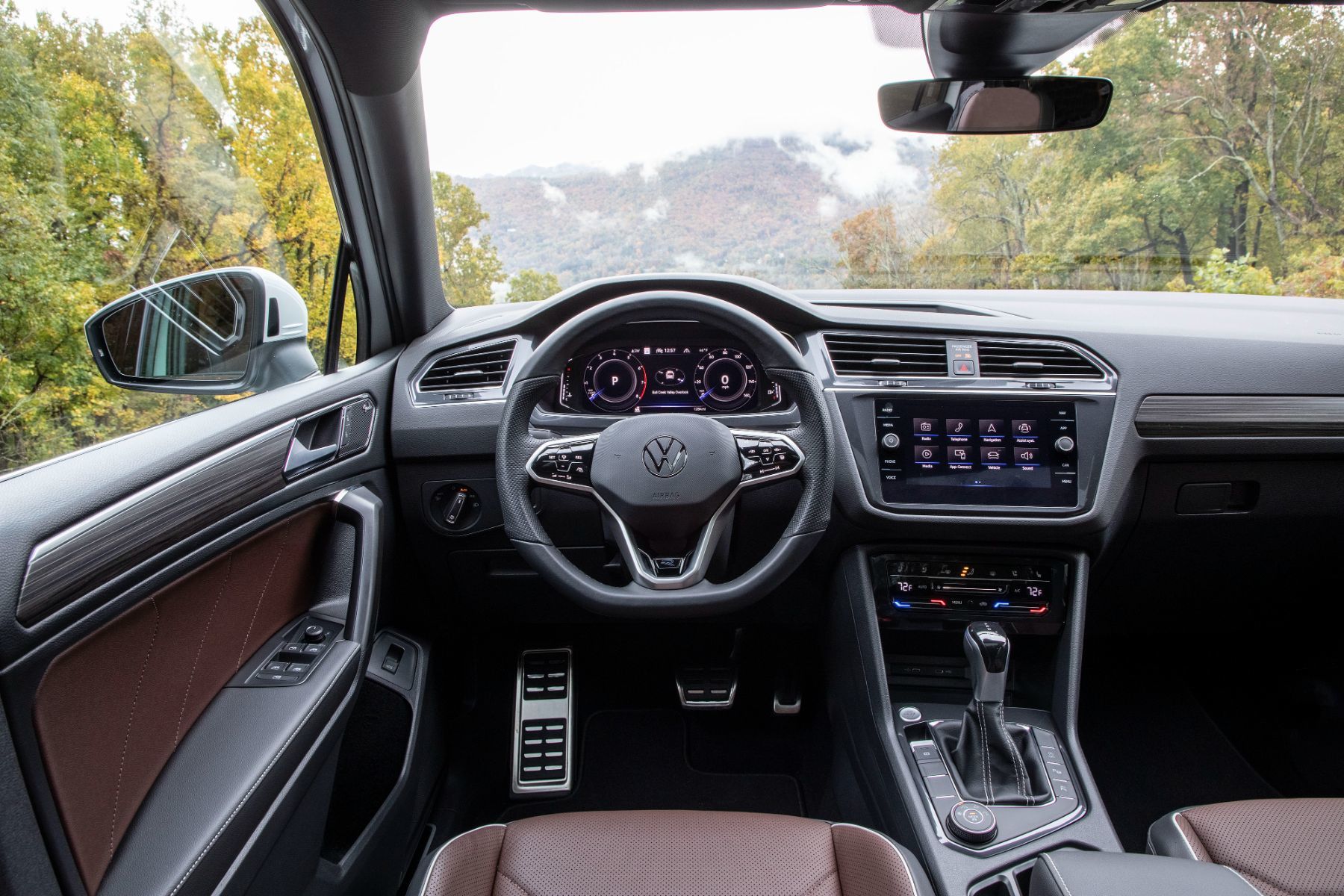
- Virtual Assistant: Available in the Tiguan, providing hands-free assistance.
- Turn signal indicator on driver's side mirror: Improves visibility and safety when changing lanes.
- Front fog lights: For improved visibility in difficult weather conditions.
- Seat upholstery: The Tiguan switches to Nappa leather for an extra touch of luxury.
- Seat memory: Available for the driver's seat in the Tiguan, adding convenience for many drivers.
- Steering wheel material: The Tiguan features a leather steering wheel, compared to the synthetic leather in the Taos.
- Heated rear seats: Extra comfort for rear passengers in the Tiguan.
- Internet access: The Tiguan includes Car-Net's 4G LTE-enabled Wi-Fi with 4 years included, providing connectivity on the move.
Performance and Fuel Economy Comparison
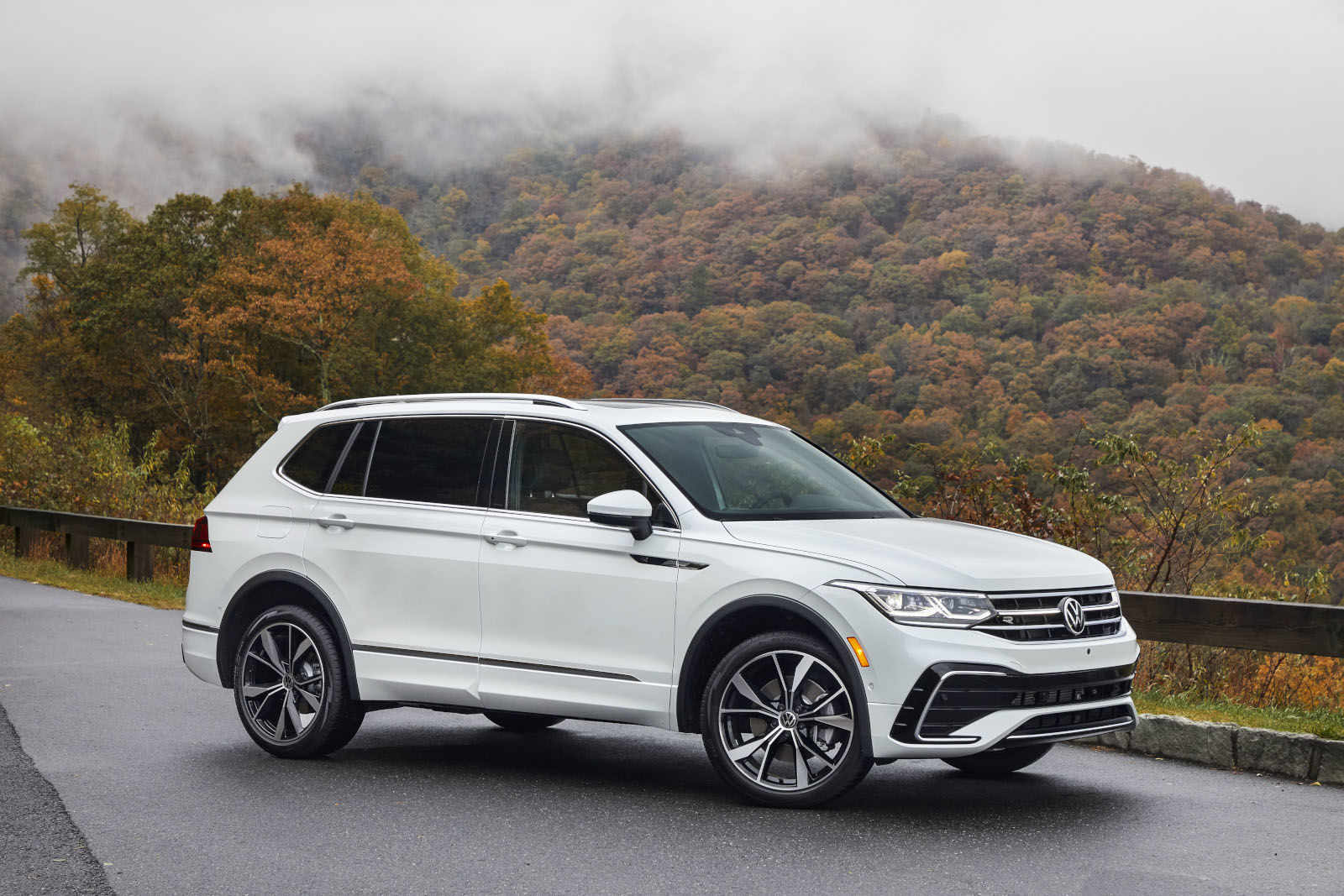
The 2024 Volkswagen Taos and Tiguan each offer distinct engine choices that reflect their design and performance philosophy, both benefiting from the advantages of turbocharging. The Taos is equipped with a 1.5-litre turbocharged engine, delivering 158 horsepower and 184 pound-feet of torque, aimed at providing efficient yet responsive driving dynamics in a compact SUV format.
On the other hand, the Tiguan steps up the performance with its larger 2.0-litre turbocharged engine, which generates 184 horsepower and a more robust 221 pound-feet of torque, catering to drivers seeking more power and a stronger driving experience in a slightly larger vehicle. Despite these differences in power output, both engines are designed to offer class-leading performance within their segments, with a focus on delivering ample low-end torque for quick acceleration and efficient fuel economy, especially notable when both models are equipped with 4Motion all-wheel drive. The Taos shows its strength in fuel efficiency, boasting lower consumption figures both in city and highway driving compared to the Tiguan. If fuel consumption is your most important criteria, the Taos will meet your needs. However, the Tiguan is quite efficient in its own right and doesn’t not require compromise to enjoy its great performance.
|
Specification
|
2024 VW Taos 4Motion
|
2024 VW Tiguan 4Motion
|
|
Engine
|
1.5-litre turbo
|
2.0-litre turbo
|
|
Horsepower
|
158 HP
|
184 HP
|
|
Torque
|
184 lb-ft
|
221 lb-ft
|
|
Fuel Consumption: City
|
9.9 L/100 km
|
10.9 L/100 km
|
|
Fuel Consumption: Highway
|
7.5 L/100 km
|
8.1 L/100 km
|
Difference in interior space between the 2024 Volkswagen Taos and the 2024 Volkswagen Tiguan
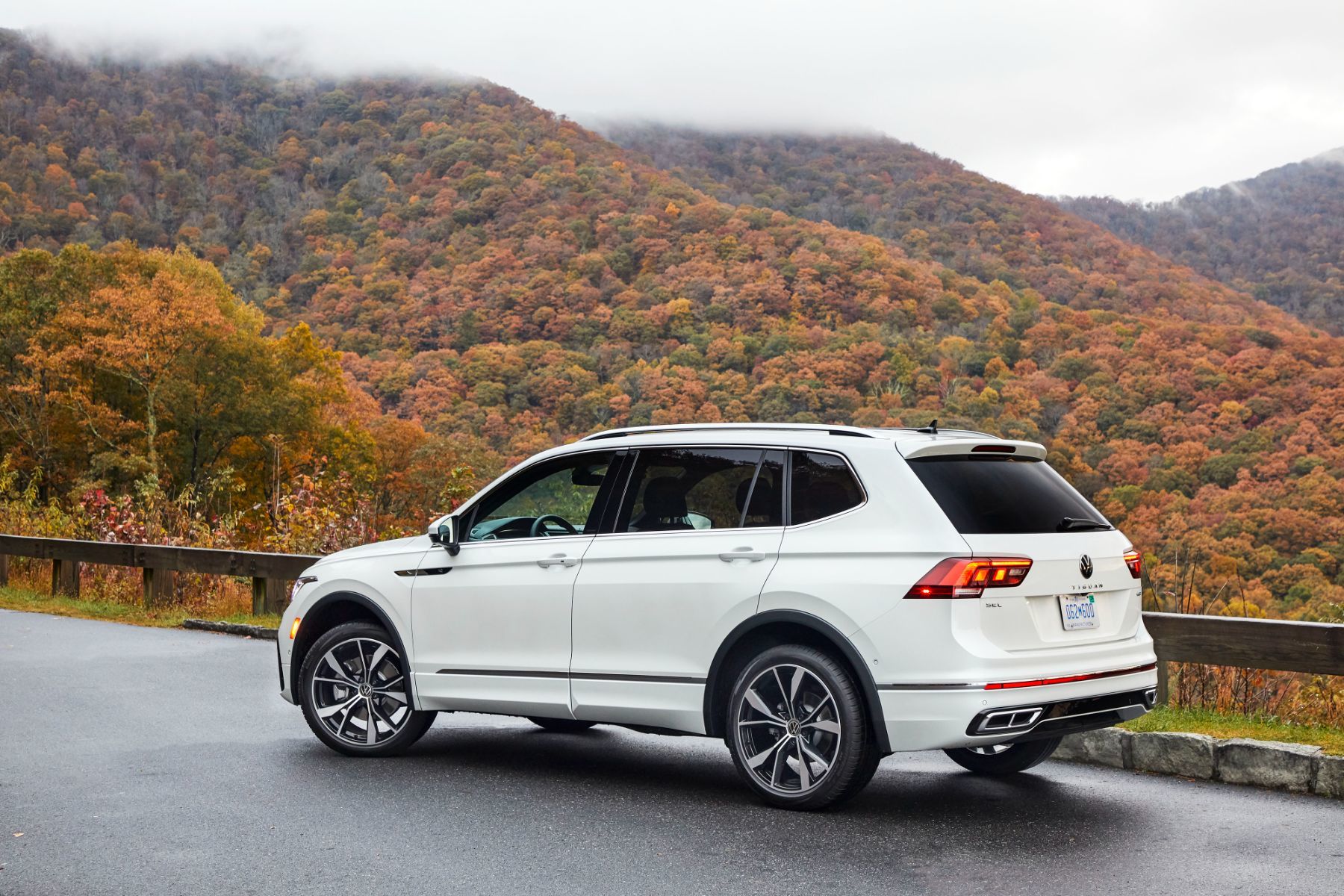
One of the main reasons we buy an SUV is for the space. The Taos and the Tiguan are two SUVs in two different segments. So a difference in space is to be expected, with the Tiguan having the overall advantage. However, as you can see from the following table, the Taos still has the edge in some areas.
|
Specification
|
2024 Volkswagen Taos
|
2024 Volkswagen Tiguan
|
|
Front headroom (mm)
|
1,003 - 1,034
|
970 - 1,006
|
|
Front legroom (mm)
|
1,019
|
1,021
|
|
Shoulder room Front (mm)
|
1,435
|
1,448
|
|
Rear headroom (mm)
|
986 - 1,011
|
960 - 993
|
|
Rear legroom (mm)
|
963
|
930 - 983
|
|
Shoulder room Rear (mm)
|
1,402
|
1,417 - 1,420
|
1. Front headroom: The 2024 Volkswagen Taos offers more headroom in the front (between 1.003 mm and 1.034 mm) compared to the 2024 Volkswagen Tiguan (between 970 mm and 1.006 mm), which can improve comfort for taller passengers.
2. Front legroom: Front legroom is very similar between the two models, with the Tiguan offering just a little more space (1,021 mm) than the Taos (1,019 mm).
3. Front shoulder room : The Tiguan has a slightly wider front shoulder room (1,448 mm) than the Taos (1,435 mm), offering a little more comfort and personal space up front.
4. Rear headroom: In the back, the Taos also offers more headroom (between 986 mm and 1,011 mm) than the Tiguan (between 960 mm and 993 mm).
5. Rear Shoulder Room: Rear shoulder room is slightly greater in the Tiguan (between 1.417 mm and 1.420 mm) than in the Taos (1.402 mm), which can contribute to a greater sense of space for rear-seat passengers.
6. Third row: The Volkswagen Tiguan is one of the few models in its class to offer a third row of seats, giving owners the option of carrying 7 passengers if needed.
Cargo Space Comparison
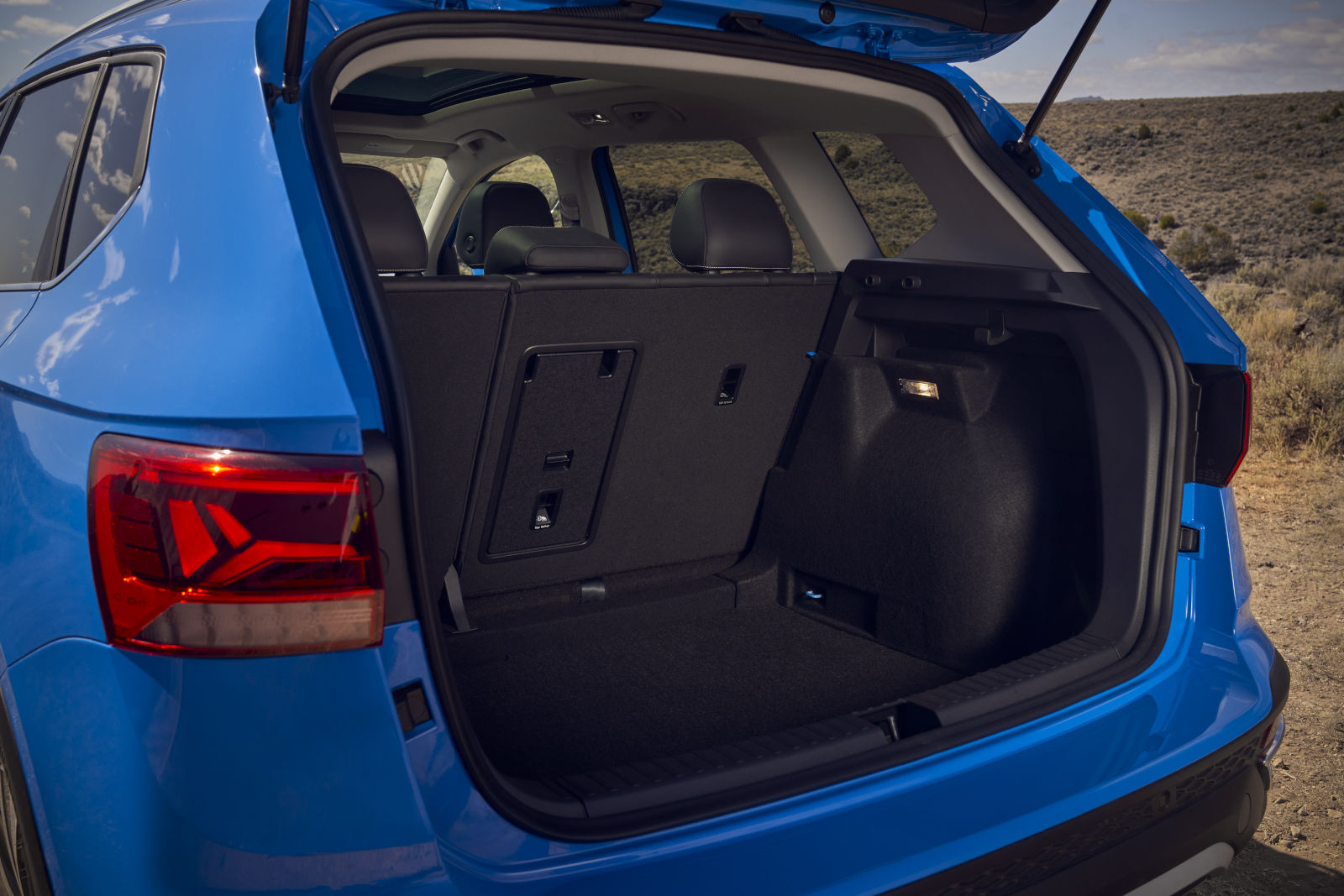
Here's a table comparing the load volume of the 2024 Volkswagen Taos and 2024 Volkswagen Tiguan behind the second row and the total volume.
|
Loading volume
|
2024 Volkswagen Taos
|
2024 Volkswagen Tiguan
|
|
Total volume (L)
|
1,866
|
1,860 - 2,081
|
|
Volume Behind 2e Row (L)
|
790
|
934 - 1,065
|
The choice between the 2024 Volkswagen Taos and the Tiguan 2024 ultimately comes down to individual needs and preferences. The Taos offers a more affordable entry point, making it an attractive option for those seeking value and efficiency without compromising on essential features and still giving you plenty of space. On the other hand, the Tiguan commands a higher price but justifies it with additional luxury features, a more powerful engine, and standard all-wheel drive. Whichever model you lean towards, Volkswagen assures that both the Taos and the Tiguan present themselves as strong contenders in their respective segments, promising a blend of performance, comfort, and cutting-edge technology.
You might also be interested in these blogs:


